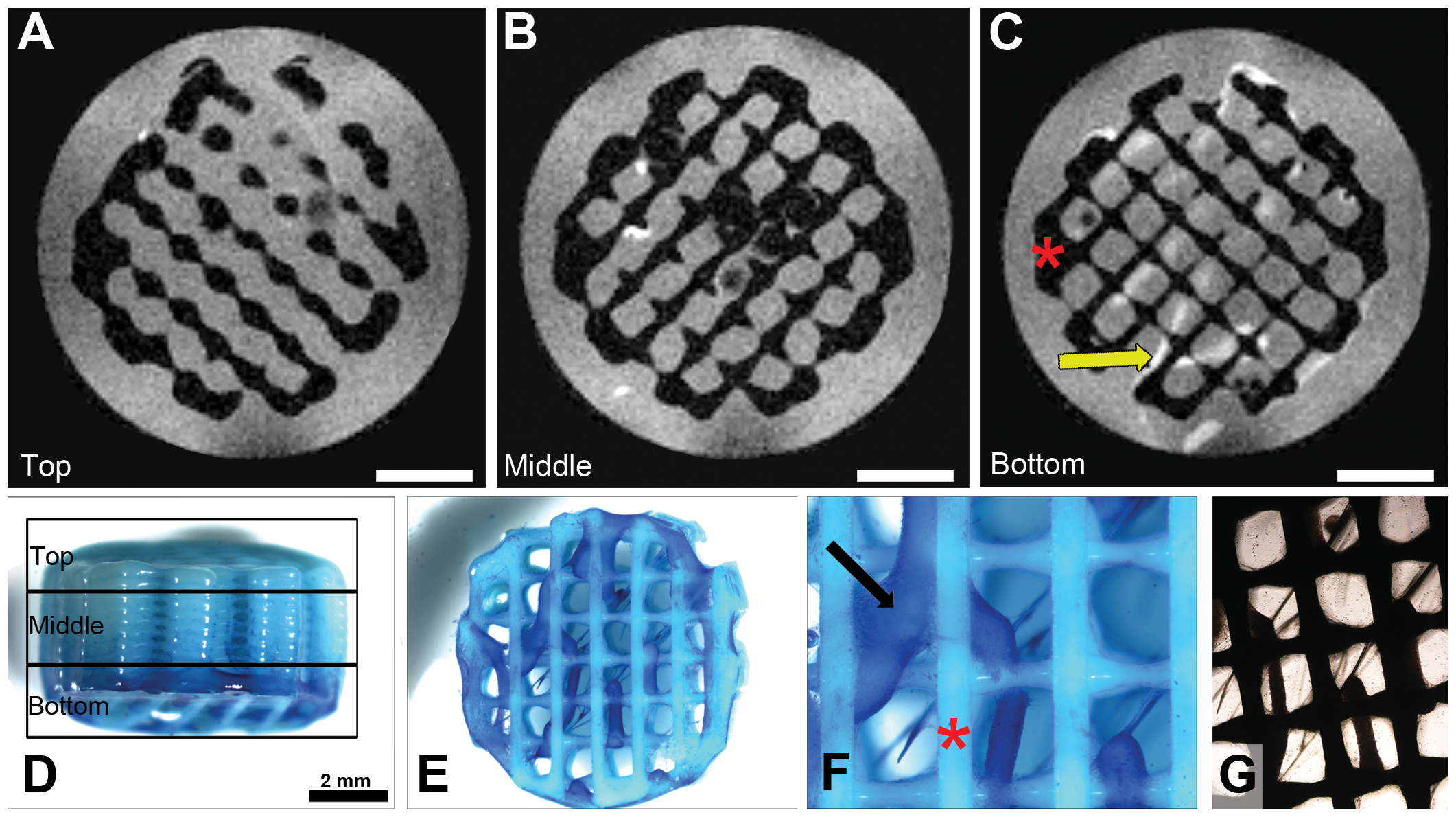An Open Source Image Processing Method to Quantitatively Assess Tissue Growth after Non-Invasive Magnetic Resonance Imaging in Human Bone Marrow Stromal Cell Seeded 3D Polymeric Scaffolds
Monitoring extracellular matrix (ECM) components is one of the key methods used to determine tissue quality in three-dimensional (3D) scaffolds for regenerative medicine and clinical purposes. This is even more important when multipotent human bone marrow stromal cells (hMSCs) are used, as it could offer a method to understand in real time the dynamics of stromal cell differentiation and eventually steer it into the desired lineage. Magnetic Resonance Imaging (MRI) is a promising tool to overcome the challenge of a limited transparency in opaque 3D scaffolds. Technical limitations of MRI involve non-uniform background intensity leading to fluctuating background signals and therewith complicating quantifications on the retrieved images. We present a post-imaging processing sequence that is able to correct for this non-uniform background intensity. To test the processing sequence we investigated the use of MRI for in vitro monitoring of tissue growth in three-dimensional poly(ethylene oxide terephthalate)–poly(butylene terephthalate) (PEOT/PBT) scaffolds. Results showed that MRI, without the need to use contrast agents, is a promising non-invasive tool to quantitatively monitor ECM production and cell distribution during in vitro culture in 3D porous tissue engineered constructs.


